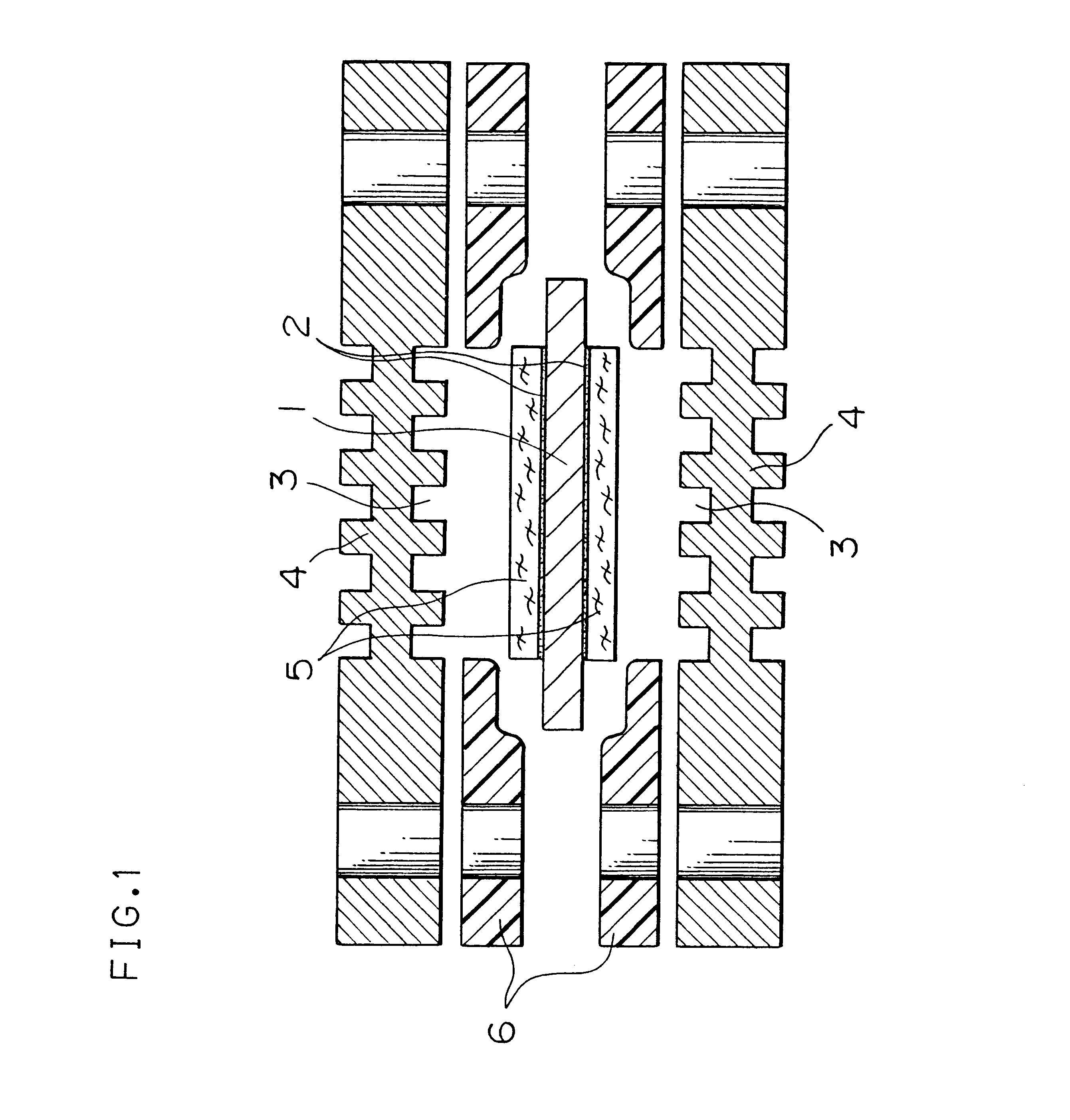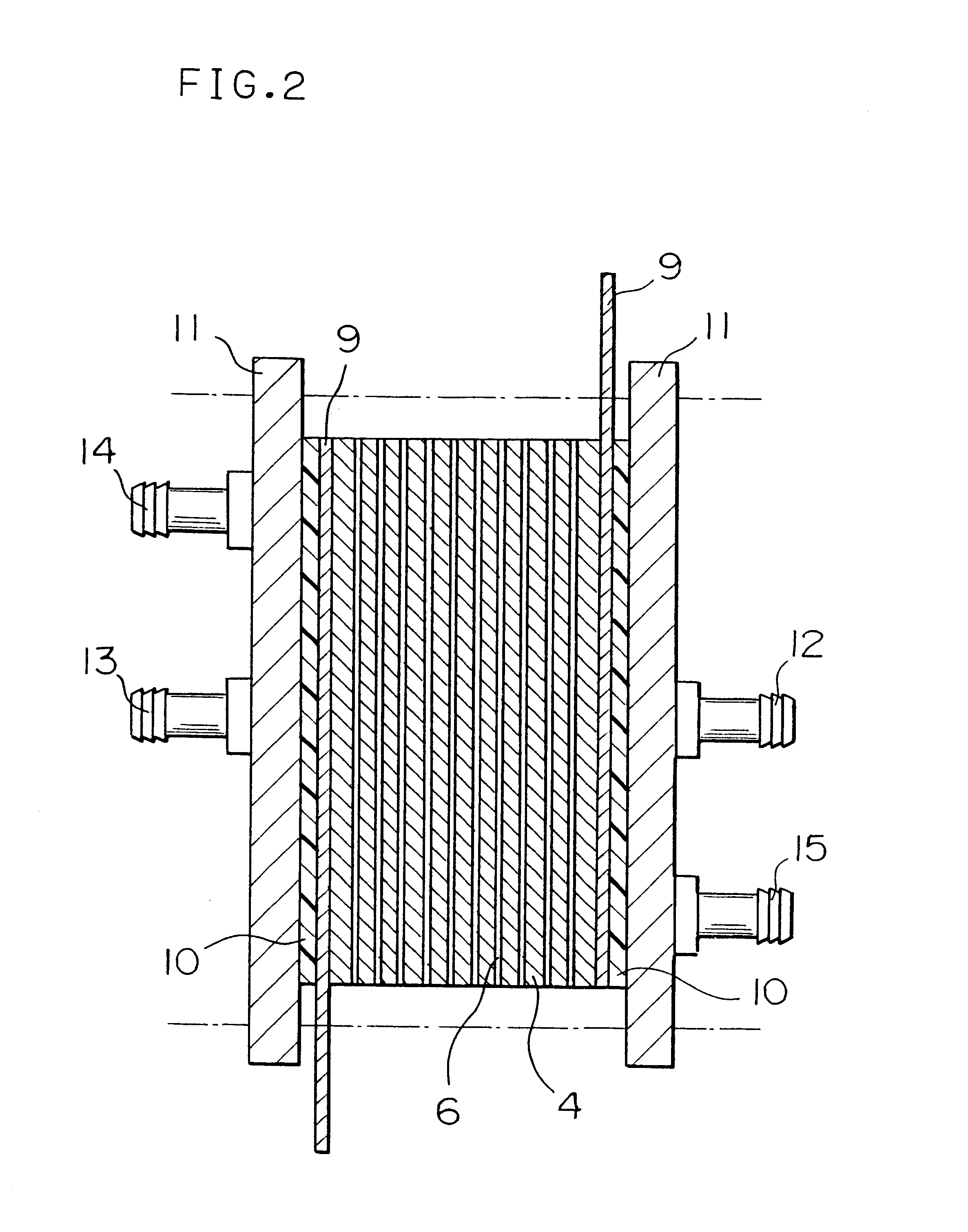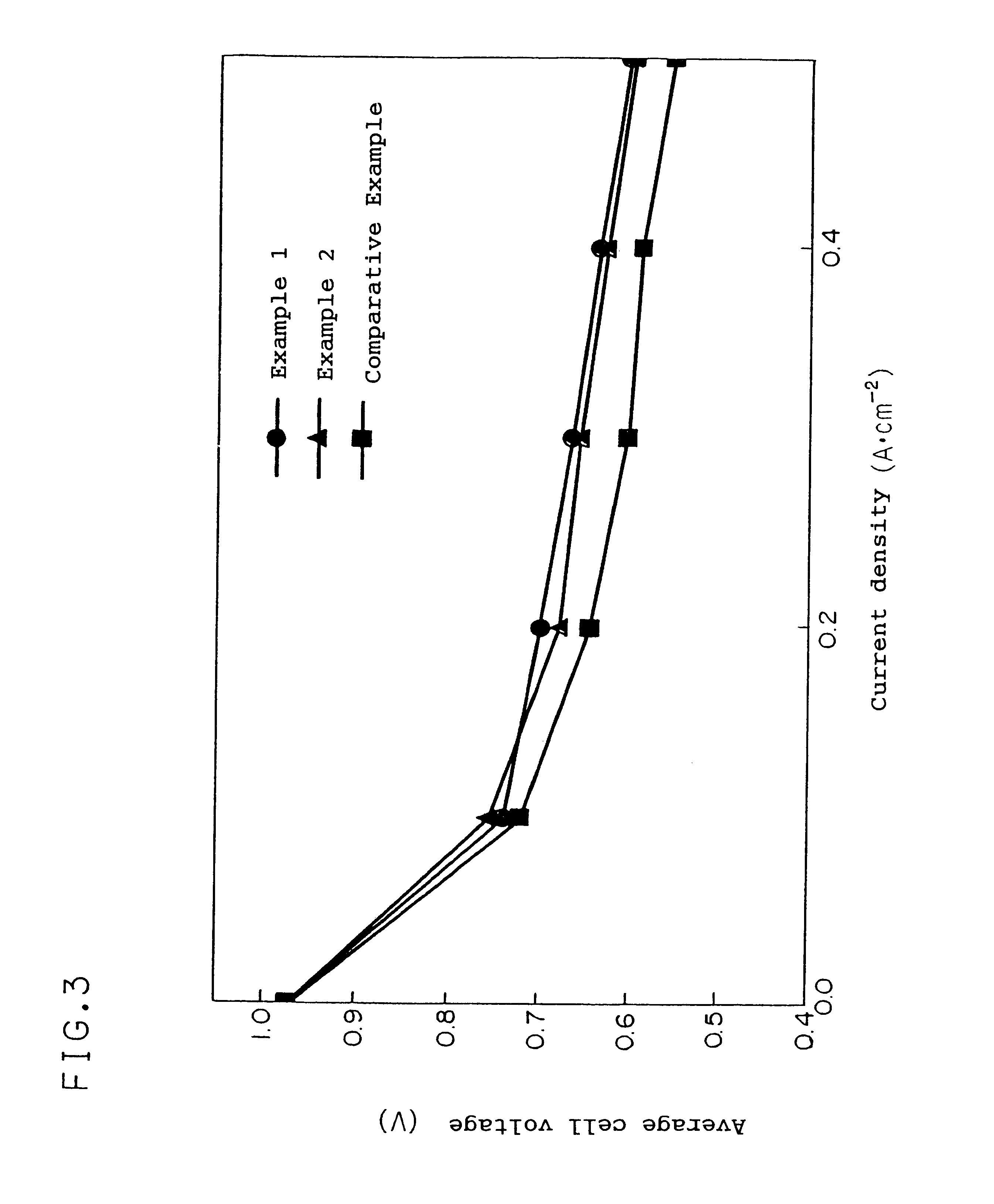Fuel cell and method of manufacture thereof
a fuel cell and fuel technology, applied in the field of fuel cells, can solve the problems of deterioration of cell performance, gradual decrease of water-repellent properties, insufficient water-repellent properties, etc., and achieve the effect of improving water-repellent properties
- Summary
- Abstract
- Description
- Claims
- Application Information
AI Technical Summary
Benefits of technology
Problems solved by technology
Method used
Image
Examples
example 2
In this example, the same cell as the cell of Example 1 was produced except that the water-repelling treatment with a 5% by weight solution of CF.sub.3 (CF.sub.2).sub.7 (CH.sub.2).sub.2 Si(OCH.sub.3).sub.3 / methanol was carried out.
The water-repelling treatment was carried out in the following manner. The non-woven carbon fabric electrodes 5 as shown in FIG. 1 were subjected to the plasma treatment at 300 W for about 5 minutes to be provided with a hydroxyl group containing activated hydrogen. Next, a 5% by weight solution of CF.sub.3 (CF.sub.2).sub.7 (CH.sub.2).sub.2 Si(OCH.sub.3).sub.3 / methanol was prepared, and the non-woven carbon fabric electrodes 5 were impregnated therewith and dried at room temperature for 1 hour. Subsequently, they were sintered at 100.degree. C. for 15 minutes, and thereby a water-repelling layer comprising CF.sub.3 (CF.sub.2).sub.7 (CH.sub.2).sub.2 Si(OCH.sub.3).sub.3 having a covalent bond with siloxane bond was formed on the non-woven carbon fabric ele...
example 3
FIG. 5 is a schematic longitudinal cross-sectional view showing the configuration of a unit cell of a fuel cell prepared in this example.
A carbon powder having a particle diameter of several microns or less was impregnated with a platinum chloride acid solution so as to make a platinum catalyst to be carried on the carbon powder surface by reduction treatment. The weight ratio of carbon to platinum carried was about 1:1.
As a water-repelling agent for the catalyst layers 21, fluorinated graphite was used. The fluorinated graphite was a compound of fluorine and carbon combined at a ratio of about 1:1, and it had a contact angle with water of about 143.degree.. The fluorinated graphite was mixed at 5% by weight with the platinum-carrying carbon powder, a solvent mainly composed of ethyl alcohol was added thereto, and the resulting mixture was kneaded to be prepared as an ink.
On the other hand, a carbon paper having a thickness of 500 microns serving as an electrode base material 22 was...
example 4
Water-repelling agents having a large contact angle to water and readily adhering and fixing to the surface to be treated were examined in place of the fluorinated graphite. As fluoric organic materials soluble in a solvent, polyvinylidene fluoride and a pitch subjected directly to fluoridation were selected.
As a result of the experiment, the polyvinylidene fluoride had a contact angle of about 100.degree., whereas the pitch had a contact angle of 145.degree. at maximum. Further, while a solution of polyvinylidene fluoride had a high viscosity and was difficult to handle, a solution dissolving the pitch into a solvent of perfluorobenzene, for example, had a relatively low viscosity and was easy to handle. This is presumably because the molecule is not polymeric and is in the form of a mass. In addition, it has high water-repelling property presumably because the higher cyclic hydrocarbon has a long fluorine atom-containing carbon chain which is superior in the water-repelling proper...
PUM
| Property | Measurement | Unit |
|---|---|---|
| Contact angle | aaaaa | aaaaa |
| Molecular weight | aaaaa | aaaaa |
| Ratio | aaaaa | aaaaa |
Abstract
Description
Claims
Application Information
 Login to View More
Login to View More - R&D
- Intellectual Property
- Life Sciences
- Materials
- Tech Scout
- Unparalleled Data Quality
- Higher Quality Content
- 60% Fewer Hallucinations
Browse by: Latest US Patents, China's latest patents, Technical Efficacy Thesaurus, Application Domain, Technology Topic, Popular Technical Reports.
© 2025 PatSnap. All rights reserved.Legal|Privacy policy|Modern Slavery Act Transparency Statement|Sitemap|About US| Contact US: help@patsnap.com



